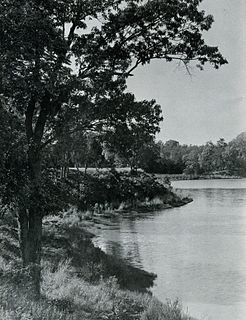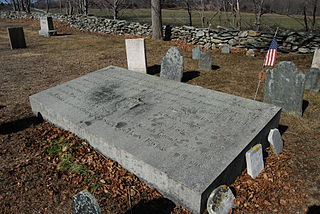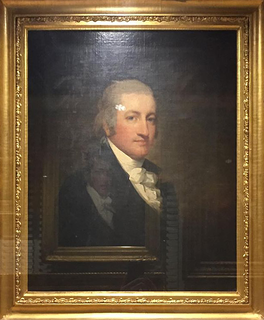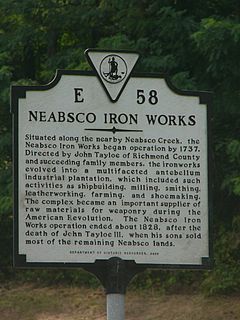Related Research Articles

Lampasas County is a county located on the Edwards Plateau in the U.S. state of Texas. As of the 2020 census, its population was 21,627. Its county seat is Lampasas. The county is named for the Lampasas River.

Abingdon is a town in Washington County, Virginia, United States, 133 miles (214 km) southwest of Roanoke. The population was 8,376 at the 2020 census. It is the county seat of Washington County. The town encompasses several historically significant sites and features a fine arts and crafts scene centered on the galleries and museums along Main Street.

The Chesterfield Railroad was located in Chesterfield County, Virginia. It was a 13-mile (21-kilometer) long mule-and-gravity powered line that connected the Midlothian coal mines with wharves that were located at the head of navigation on the James River just below the Fall Line at Manchester. It began operating in 1831 as Virginia's first common carrier railroad.
The Pennsylvania Historical and Museum Commission (PHMC) is the governmental agency of the Commonwealth of Pennsylvania responsible for the collection, conservation and interpretation of Pennsylvania's historic heritage. The commission cares for historical manuscripts, public records, and objects of historic interest; museums; archeology; publications; historic sites and properties; historic preservation; geographic names; and the promotion of public interest in Pennsylvania history.

Abraham Darby, in his later life called Abraham Darby the Elder, now sometimes known for convenience as Abraham Darby I, was an English ironmaster and foundryman. Born into an English Quaker family that played an important role in the Industrial Revolution, Darby developed a method of producing pig iron in a blast furnace fuelled by coke rather than charcoal. This was a major step forward in the production of iron as a raw material for the Industrial Revolution.

Indian Mound Cemetery is a cemetery located along the Northwestern Turnpike on a promontory of the "Yellow Banks" overlooking the South Branch Potomac River and Mill Creek Mountain in Romney, West Virginia, United States. The cemetery is centered on a Hopewellian mound, known as the Romney Indian Mound. Indian Mound Cemetery is also the site of Fort Pearsall, the Confederate Memorial, Parsons Bell Tower, and reinterments from Romney's Old Presbyterian Cemetery. The cemetery is currently owned and maintained by the Indian Mound Cemetery Association, Inc.

Buildings, sites, districts, and objects in Virginia listed on the National Register of Historic Places:
Augustine Washington Jr. (1720–1762) was a Virginia planter, soldier, member of the House of Burgesses and elder half-brother of George Washington.
John Lysaght and Co. was an iron and steel company established in Bristol, England, and with later operations in Wolverhampton, Newport, and Scunthorpe. The company was acquired by GKN in 1920.
Smith's Hundred or Smythe's Hundred was a colonial English settlement in the Province of Virginia, in the modern United States of America. It was one of the original James River plantations named after the treasurer of the Virginia Company, Sir Thomas Smith. It was settled by the English in 1617 and after 1620, was known as Southampton Hundred in honor of the Earl of Southampton. The site was originally home to a village of the Paspahegh Indians. They were located along the north bank of James River.

Popes Creek is a small tidal tributary stream of the Potomac River in Westmoreland County, Virginia. The George Washington Birthplace National Monument lies adjacent to Popes Creek estuary.

The Old Colony Iron Works-Nemasket Mills Complex is a historic industrial site located on Old Colony Avenue in the East Taunton section of Taunton, Massachusetts, United States, adjacent to the Taunton River at the Raynham town line. The site was first occupied by the Old Colony Iron Company, which had originally been established in the 1820s as Horatio Leonard & Company. The western part of the complex was sold to Nemasket Mills in 1889. The eastern part was acquired by the Standard Oil Cloth Company. The site was added to the National Register of Historic Places in 1984.

Thomas Baylies was a Quaker ironmaster first in England, then in Massachusetts.

Kodak is an unincorporated community and a neighborhood of Sevierville in Sevier County, Tennessee, United States. It is located along State Highway 139 and State Highway 66, and just south of I-40 and Knoxville, Tennessee. The elevation of Kodak is about 896 feet above sea level.

The Pigeon Forge Mill, commonly called the Old Mill, is a historic gristmill in the U.S. city of Pigeon Forge, Tennessee. Located along the West Fork of the Little Pigeon River, the mill complex currently consists of a millhouse, breastshot wheel, and milldam, all of which are operative. The mill is the only structure in Pigeon Forge listed on the National Register of Historic Places.
Joseph Sharp was an early settler of New Jersey, landowner, supporter of education, iron manufacturer and industrialist. His flour mill provided flour to American troops in the War of 1812.

Colonel John Tayloe II was a planter and politician, among the richest planters in colonial Virginia. He served in public office including the Virginia Governor's Council, also known as the Virginia Council of State.

Col. John Tayloe I was one of the richest plantation owners and businessmen in Virginia for his generation. Considered to be the chief architect of the family fortune, he was known as the "Hon. Colonel of the Old House". The Tayloe family of Richmond County, Virginia, including John Tayloe I, his son, John Tayloe II, and grandson, John Tayloe III, exemplified gentry entrepreneurship.

John Tayloe III, of Richmond County, Virginia, was a planter, politician and businessman. He was prominent in elite social circles. A highly successful planter and thoroughbred breeder, he was considered the "wealthiest man of his day". A military officer, he also served in the Virginia House of Delegates and Senate of Virginia for nine years. The Tayloe family of Richmond County, including his father, John Tayloe II, and grandfather, John Tayloe I, exemplified gentry entrepreneurship.

The Neabsco Iron Works was located in Woodbridge, Virginia, US. It was situated on 5,000 acres (2,000 ha) by the Neabsco Creek.
References
- 1 2 waymarking.com: "Bristol Iron Works - Virginia Historical Markers"
- ↑ Brydon 1934
- ↑ Virginia Writers' Project (1 January 1972). Virginia: a guide to the Old Dominion. North American Book Dist LLC. pp. 345–. ISBN 978-0-403-02195-6 . Retrieved 16 October 2011.
Bibliography
- Brydon, G. MacLaren (1934). "The Bristol Iron Works in King George County". The Virginia Magazine of History and Biography. Virginia Historical Society. 42 (2): 97–102. JSTOR 4244575.